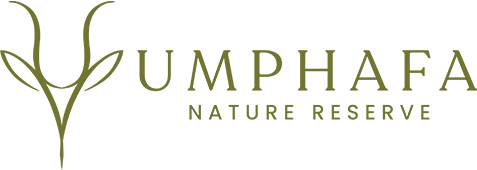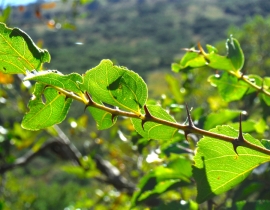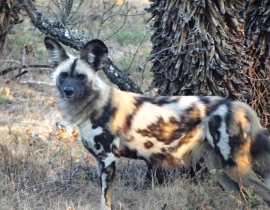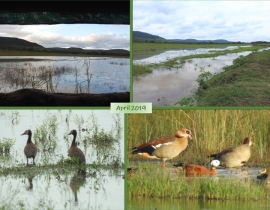Posted May 8, 2014 in All
The umPhafa tree: Not only a tree that is one of South Africa’s most widely distributed trees but also a tree that lends its Zulu name to our reserve. The common name, Buffalo Thorn, refers to the notorious thorns, one pointing forward and one pointing backwards. In Zulu custom this is believed to remind us of where we are going and where we have been. In the Afrikaans language it is known as the wag-‘n-bietjie tree and anyone who has come into contact with the thorns will know that if you get stuck on them you will have to ‘wait-a-bit’ before you can free yourself.
The leaves and fruit of this tree are sought after by many birds and animals. Giraffes are especially fond of the leaves and even dead leaves that have fallen to the ground will often be eaten by animals such as impala, so little is wasted. A tasty spinach can be made from boiling the leaves and honey can be found in the flowers. During the Boer war the seeds of the fruit were ground to make a coffee substitute and you can even make beer from the fruit if fermented properly. Medicinally an extract from the roots can be used as a painkiller on external complaints such as boils, sores, glandular and chest swellings. With all these different uses it is a important tree to have in abundance on the reserve.
To the Zulu people this tree plays a very important part in burial rituals. It was once customary to plant a Buffalo Thorn on the grave of a Zulu chief to show the significance of the grave. It is also used to carry home the spirit of a family member who has passed away in a location far away. The branch which carries the spirit will even have its own seat on the journey home.
In some regions of South Africa it is believed that the tree is immune to lightning therefore it will be chosen as a tree to shelter under if caught in a storm. It is also believed that if it is felled in the summer months then great droughts will follow. Some tribes will use the tree to make kraals or hedges in which they will keep their livestock to protect them from lions and other predators.
Nature truly provides us with so many of the animal kingdoms need. Often we forget this when modern practices become the norm. Who would have thought this quite unassuming tree would have so many uses for so many and play such an important role in the lives of the local people.



